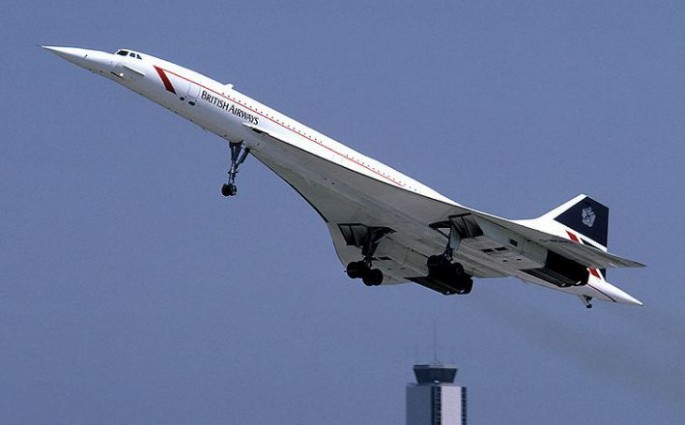NASA and the U.S. Defense Advanced Research Projects Agency (DARPA) are teaming-up to design and build the successor to the iconic Concorde supersonic jet airliner that flew thousands of passengers at mach speeds across the Atlantic from 1976 to 2003.
The NASA and DARPA successor aircraft is being developed under the joint "Quiet Supersonic Technology" or QueSST. QueSST will fly faster than Concorde but will be much quieter, hence the project's name.
NASA recently awarded a contract for the preliminary design of a low sonic boom flight demonstrator aircraft known as the "QueSST X-plane."
This is the first in a series of X-planes in NASA's New Aviation Horizons initiative, introduced in the agency's Fiscal Year 2017 budget. NASA said the new planes could take to the skies as early as 2020 if it receives the funding as planned.
QueSST is designed to fly at Mach 1.4, 55,000 feet above the ground. The aircraft is shaped to separate the shocks and expansions associated with supersonic flight to reduce the loud sonic booms associated with supersonic aircraft.
Concorde's sound at cruising altitude was about 105 decibels, but the X-plane might generate 70 to 80 decibels of noise. Quick and quiet are the buzz words.
QueSST's "heartbeat" will be dramatically quieter than the traditional "N-wave" sonic boom associated with the current supersonic aircraft in flight today. The Skunk Works team has been advancing this technology for the last 20 years as part of multiple efforts.
Skunk Works is the official alias for Lockheed Martin's Advanced Development Programs (ADP). It was responsible for a number of famous aircraft designs, including the U-2, the Lockheed SR-71 Blackbird, and the Lockheed Martin F-22 Raptor and the Lockheed Martin F-35 Lightning II.
NASA selected a team led by Lockheed Martin to complete a preliminary design for the QueSST X-plane. This endeavor supports NASA's Commercial Supersonic Technology Project, which aims to better understand acceptable commercial supersonic aircraft sound levels across the United States and develop a way for piloted aircraft to fly fast with low sonic booms.
At 90 feet long, the demonstrator will be smaller than future civil supersonic aircraft. The goal is to eventually have commercial supersonic transportation.
Lockheed Martin has worked with NASA for more than a decade to develop the tools and technology needed to make environmentally responsible commercial supersonic flight a reality.
NASA's plan for the X-plane is very ambitious, setting out to develop a whole series of new X-planes over the next 10 years. One of the planes will be roughly the size of a business jet that burns low-carbon bio-fuels and generates such quiet sonic booms that people on the ground will barely hear them
DARPA, however, is working on a design of their own for an X-plane with a stacked wing frame with a series of rotors mounted in between. The rear-mounted wing will create a vertical thrust for takeoff and landing, then rotate to provide horizontal thrust for cruise and second, smaller wing near the nose of the plane would work the same way.
DARPA says its X-plane might fly as fast as 460 mph and could be in the air by as early as 2018.



























